#gemini program
Text
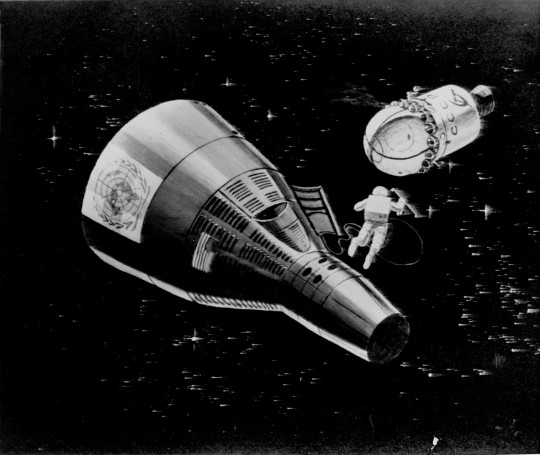
Artwork of the Gemini-Vostok Rescue of the stranded Mercury Capsule in orbit. This scene is from the book version of "Marooned", specifically the first edition of the book.

Synopsis of the book:
"The first edition of the novel Marooned opens with the central character, Major Richard 'Dick' Pruett, attempting to come to terms with his impending doom. Pruett, an astronaut in the Mercury-Atlas IV program, is in orbit alone. His engines have failed to fire for re-entry and he is stranded in orbit, where he faces death due to asphyxiation as he depletes the on-board supply of oxygen. The story goes into an extended flashback that reviews Pruett's development as a US Air Force fighter test pilot and training as an astronaut.
As Pruett reviews his life, a friend of his in the astronaut corps, Jim Dougherty, refuses to accept that all is lost. He pushes NASA officials to mount a rescue mission using the prototype of a new spacecraft in development, the two-man Gemini.
The challenges are formidable. The rescue mission must be prepared and launched in a matter of mere days. Dougherty must fly the untested Gemini spacecraft solo, achieve a rendezvous with the Mercury vessel stranded in orbit, get Pruett on board the new spacecraft in the empty co-pilot's seat, and return to Earth. (At the time the novel was written, none of these tasks – Gemini launch, rendezvous or EVA – had been attempted.)
As NASA scrambles to prepare and launch the rescue mission, the Soviets secretly make their own plans to rescue Pruett first, rushing to send a cosmonaut aloft in a Vostok spacecraft. (In this version, the Soviets have already achieved the orbital objectives of rendezvous, docking and extravehicular activity [EVA]; in real life the Soviets did not achieve all these milestones until 1969.) Ultimately Dougherty succeeds in his mission and rescues Pruett; cosmonaut Andrei Yakovlev in the Vostok does rendezvous with the Mercury and provides assistance in the rescue (by using high-intensity spotlights to improve visibility) but does not take an active physical role in it. The novel ends with all three spacemen returning safely to Earth."
-Information from Wikipedia: link, link
Posted on Flickr by Drew Granston: link
#Marooned#Gemini#Gemini Capsule#NASA#Gemini Program#Project Gemini#Vostok#Vostok programme#Soviet Space Program#Orbit#Space#artwork#my post
33 notes
·
View notes
Photo
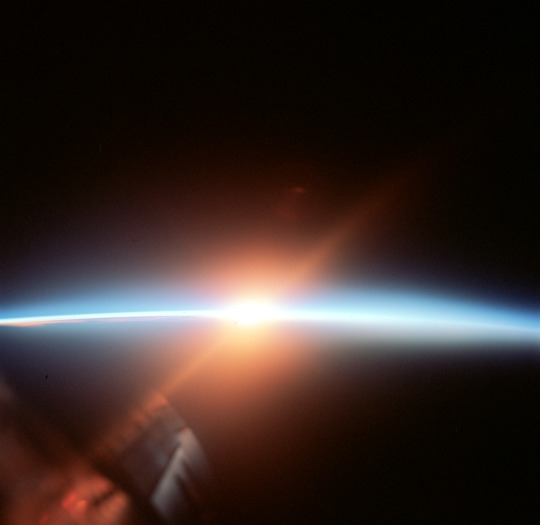


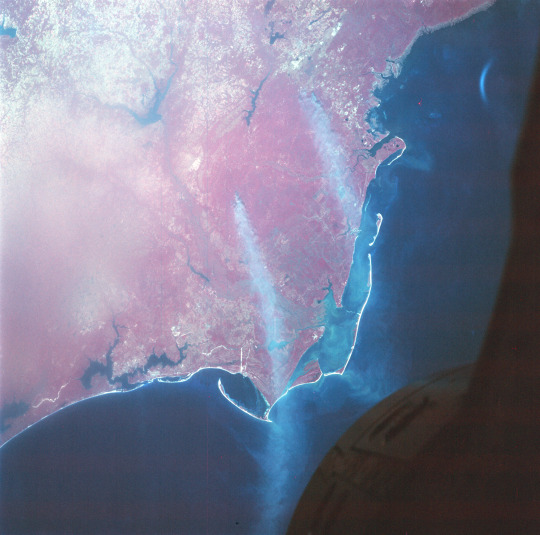
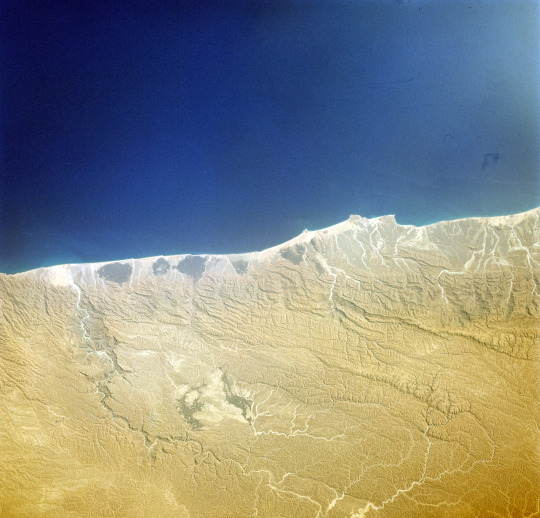
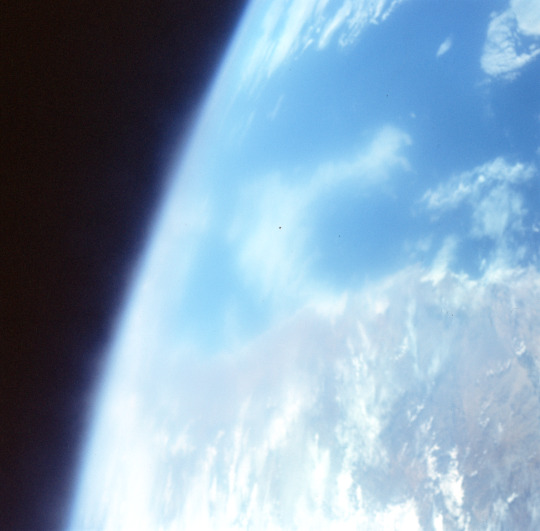
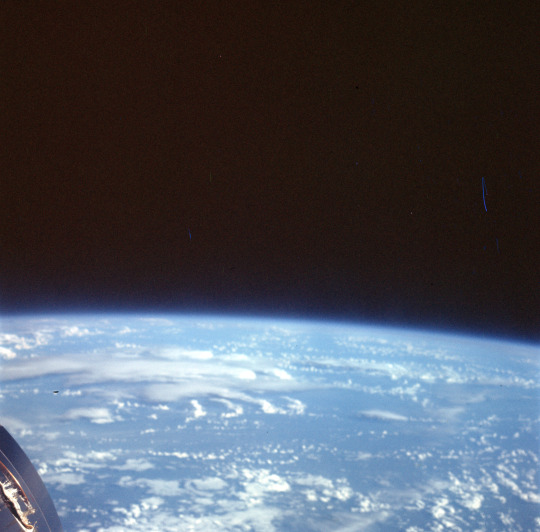

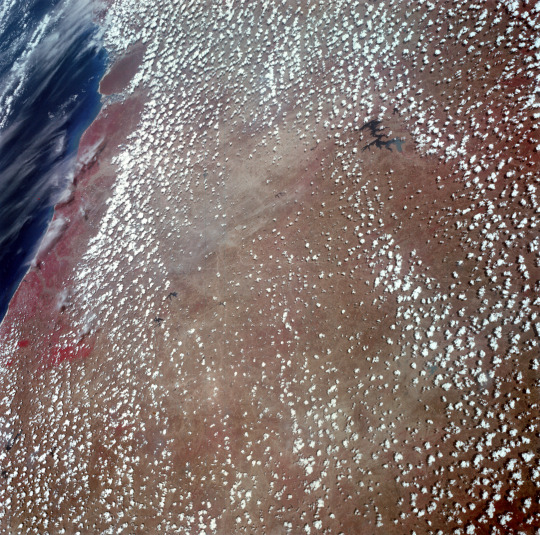

Snapshots from the Gemini 7 mission, December 4-18, 1965.
2K notes
·
View notes
Text
God so @literallymechanical told me about this the other day and I'm still laughing about it. So, Gus Grissom was a one of the original seven Project Mercury astronauts, and was actually the second American to go to space, and the second American to go to space twice. He was also a short king but we'll get to that in a bit. Here he is with the Mercury-Redstone 4 capsule, nicknamed the Liberty Bell 7!

Mercury-Redstone 4 was the second US manned spaceflight, and there were some complications after its splashdown in the Atlantic ocean when the emergency explosive bolts unexpectedly fired, opening the hatch and flooding the thing. Our boy Gus had to tread water in his spacesuit while he waited for rescue, nearly drowning the entire time. The Liberty Bell 7 couldn't be retrieved, and is currently at the bottom of the ocean.
When Gus was selected as the pilot for the first manned Gemini flight, he became heavily involved in the design of the spacecraft cockpit. He also happened to be the shortest of the original astronauts at 5'7" tall. Literally, after he was done with it, 14 out of the 16 existing astronauts could not fit inside. They had to completely change the cockpit design for future missions.
NASA didn't learn its lesson about Gus and decisions, so they let Gus give his Gemini capsule a nickname, and it went about as well as you'd expect. This is the excerpt from his Wikipedia article (image description in alt text):

Fucking hilarious. There's a specific brand of humor you see in the early US space program that I just adore. It’s a phenomenal mix of like, 60's dry military humor (all these guys were airforce pilots), and the sheer incredulity of doing something as insane as going to space. Sometimes, you just gotta laugh and name your dinky little space car after the Titanic, because the first one fucking SANK IN THE OCEAN.
211 notes
·
View notes
Text
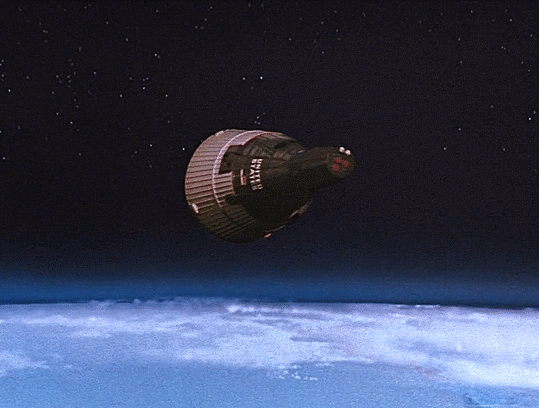

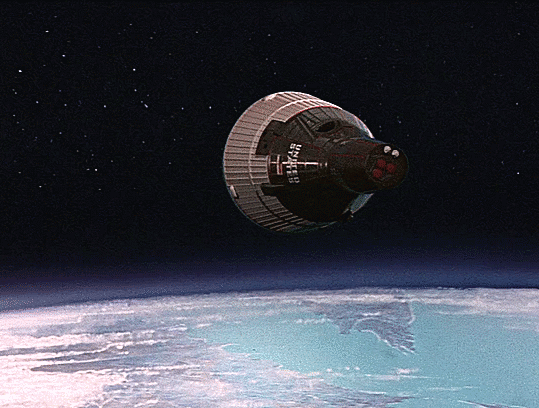

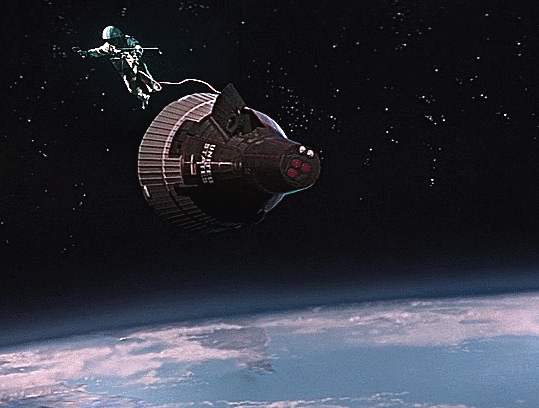
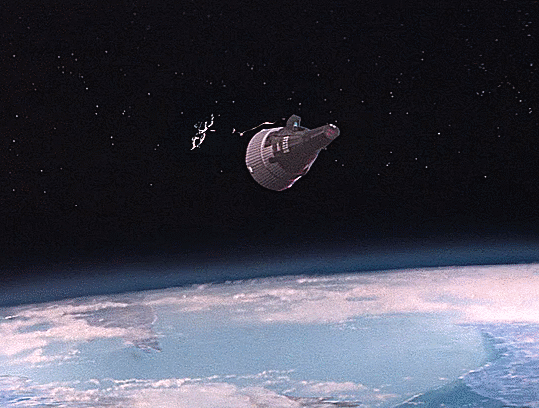
Gemini Capsule "Jupiter-16" in You Only Live Twice (1967)
#You Only Live Twice#Jupiter 16#Gemini#Gemini Program#Gemini Capsule#spaceship#space capsule#filmedit#filmgifs#bondedit#scifiedit#GIF#my gifs#You Only Live Twice Rewatch#Bond-a-Thon#Bond a Thon
45 notes
·
View notes
Text
Today also marks the anniversary of the first unmanned Gemini flight, GT-1, which launched on April 8th, 1964, marking a promising (if sometimes slightly harrowing) start for the Gemini program. You can watch select footage of the flight here:
youtube
15 notes
·
View notes
Text
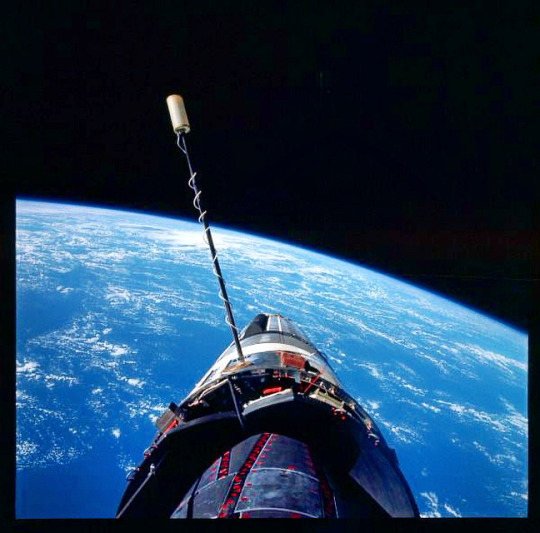
The final Gemini mission. Astronauts James Lovell & Buzz Aldrin flew Gemini XII; the 10th & final crewed mission on Project Gemini, Nov 1966. The 3-day, 22-hour, 59-orbit mission saw Aldrin perform 3 EVAs totalling 5.5 hours. This accomplishment met a major goal for NASA by demonstrating astronauts could work outside a spacecraft for extended periods of time. It was Buzz’s rookie flight while Lovell had flown on Gemini 7. The backup crew for the mission was Gene Cernan & Gordon Cooper.
#astronauts#gemini 12#nasa#space travel#space exploration#vintage space#astronaut#space race#space age#space#space history#Gemini program#low earth orbit#1966#1960s#nasa photos#space program#buzz aldrin#james lovell#spacecraft
16 notes
·
View notes
Photo

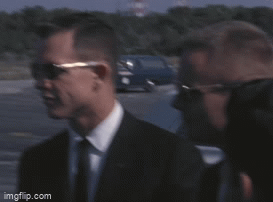




Neil Armstrong and Dave Scott leave Kennedy Space Center for Houston Texas following their Gemini 8 mission
#Neil Armstrong#Dave Scott#NASA#gemini 8#gemini program#1960s#1966#first man#mine#kennedy space center#houston#Texas
10 notes
·
View notes
Text
Artemis is a great name for a lunar exploration program, so why the hell did we call the first one Apollo? Artemis is the goddess of the Moon! Apollo is her twin, sure, but he's the exact opposite, the god of the sun! It would be like naming a Mars mission Aphrodite instead of Ares because Aphrodite is Ares' lover, even though Aphrodite is clearly a name for a Venus program.
Mercury made sense because it was the first American spaceflight program and Mercury is the first planet from the sun, but it was also symbolic for carrying humanity's message to space.
Gemini made sense because the spacecraft was designed for two people, and Gemini represents the twins Castor and Pollux.
Apollo is just back-assward. It doesn't make sense.
#artemis program#artemis#apollo program#apollo#mercury program#gemini program#project mercury#project gemini#project apollo#project artemis#moon#the moon#space#nasa#lunar exploration
6 notes
·
View notes
Text

gem's angler fish? pretty cool.
#my art#geminitay fanart#geminitay#gemini tay#hermitcraft gem#hermitcraft#hermitcraft fanart#hermitblr#artists on tumblr#art#digital art#illustration#artist#artistsontumblr#fanart#i hate autodesk sketchbook#tearing things with my teeth#ive never been able to get colours to look the way i want them to the same way i could do with photoshp#deepest sigh subscription programs my beloathed#no idea how to paint but consider this an idea to come back to later and Fix TM#ughghghghghgh#still#i think the vibes of the atmosphere i was going for are kind of there#having a real big hand/skill not matching my eye art moment#but im telling myself 100 bad pots to make one good pot 100 bad pots to make one good pot-#art improvement when#(learn how to paint and get a better program)#(soon)#(Soon.)
2K notes
·
View notes
Text
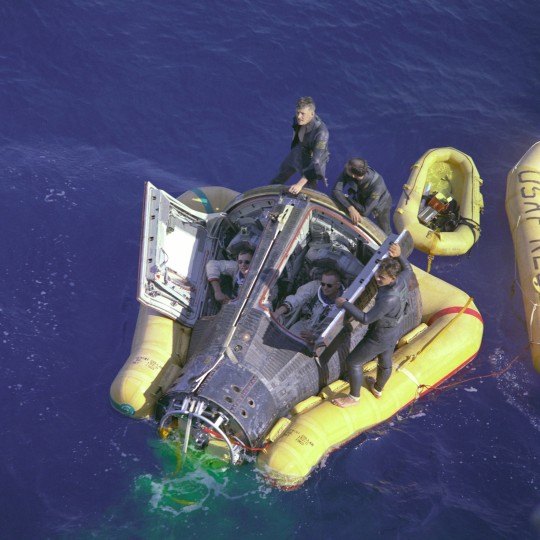
Armstrong and Scott with Hatches Open
"Astronauts Neil A. Armstrong and David R. Scott sit with their spacecraft hatches open while awaiting the arrival of the recovery ship, the USS Leonard F. Mason after the successful, but early, completion of their Gemini VIII mission. They are assisted by USAF Pararescuemen Eldrige M. Neal, Larry D. Huyett, and Glenn M. Moore. The overhead view shows the Gemini 8 spacecraft with the yellow flotation collar attached to stabilize the spacecraft in choppy seas. The green marker dye is highly visible from the air and is used as a locating aid."
Date: March 16, 1966
NASA ID: S66-18602
#GT-8#GT-VIII#Gemini 8#Gemini VIII#SC8#NASA#Gemini Program#Project Gemini#splash down#recovery#March#1966#Pacific Ocean#USS Leonard F. Mason#USS Leonard F. Mason (DD-852)#Gearing class#Destroyer#ship#United States Navy#US Navy#Navy#USN#my post
238 notes
·
View notes
Photo
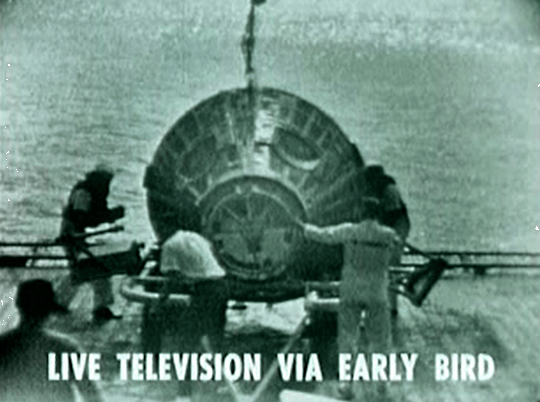
From the depths of my draft folder.
68 notes
·
View notes
Text
Strange Encounters
I must confess to being a bit of a pack rat, primarily with papers and a few collectibles or mementos. For instance, I have official NASA mission patches for all the Mercury, Gemini, and Apollo missions, as well as numerous patches for significant events and test activities, including for Vandenberg launch facilities that were never built. I also have two commemorative seat cushions from sporting…

View On WordPress
#1981 World Series#Apollo Program#attorneys#Autobiography#business cards#collectibles#Gemini Program#Lawyers#mementos#memoirs#Mercury Program#music biz#Superbowl XIX
1 note
·
View note
Text

The vehicles used by REAL astronauts, not some rich space tourist wearing a f*****g cowboy hat.
527 notes
·
View notes
Text

obsessed with the energy of the room where the astronauts prepared for Gemini III. Mustard yellow chair that matches the booties. Green ottoman. The Contraptions. just the worst mottled carpet(?) you've ever seen. grandma's attic curtains. And Gus Grissom just kicked back in a spacesuit, seconds away from a nap. Incredible. You could not have created a more 60's room.
5 notes
·
View notes
Text

8 days in a tin can. Gordon Cooper & Pete Conrad approach the Gemini 5 capsule, Aug 1965. The mission would set a world record for time in space & be the first time the Americans held it. The 3rd crewed flight in Project Gemini could have lasted a day longer but the oncoming threat of Hurricane Betsy cut it short. Gemini 4, the previous NASA duration record, lasted 4 days. The 8-day G5 mission would be the time a potential future moon landing would take. Cooper, who flew previously during Project Mercury, became the 1st human to fly 2 earth orbital missions.
#gemini 5#astronauts#1965#space exploration#spacesuits#space travel#space flight#space#astronaut#astronaut suit#spacemen#vintage space#nasa#space age#spaceman#Gemini program#space race#1960s#space program#project Gemini#spacesuit#space history#nasa astronauts#gordon cooper#pete conrad
18 notes
·
View notes
Text
I need…I just need…ALL I need…is for everyone to agree that 2021 is indeed after 1996…and that everything that happens in 1996…did indeed happen BEFORE 2021…as in no matter what they do in this show…if it is before the present timeline…the adults had experienced it BEFORE the very first frame we see of them…that’s my one request of the universe…my one prayer for order in this chaos…cause it’s starting to make me feel SO insane
#yellowjackets blogging? more like yellowjackets praying as I lay my weary gemini ass to bed during this taurus season and merc retrograde#I will go back to regularly scheduled programming soon I’m sure but today really took a toll on me. my brain. my spirit. all that#I don’t expect anyone to agree with me on anything. it’s just. I can’t. I fear I can’t keep explaining how the calendar works without#I don’t know. retreating to a cabin in the woods. I live in the pnw I could do it. too on the nose? maybe. but I might find peace.#if anyone knows a better way to explain linear time to the masses. hmu !!
58 notes
·
View notes